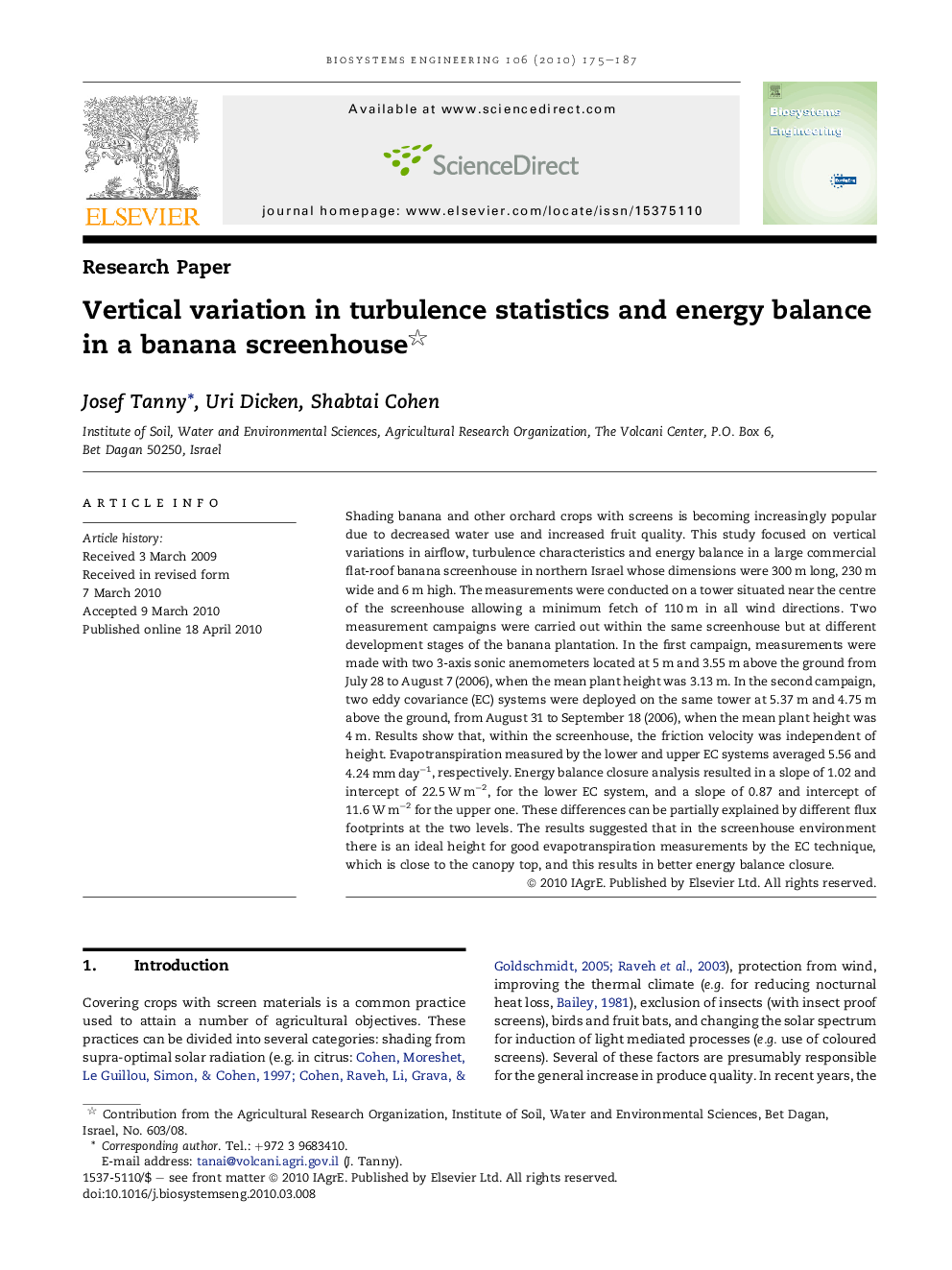| Article ID | Journal | Published Year | Pages | File Type |
|---|---|---|---|---|
| 1711839 | Biosystems Engineering | 2010 | 13 Pages |
Shading banana and other orchard crops with screens is becoming increasingly popular due to decreased water use and increased fruit quality. This study focused on vertical variations in airflow, turbulence characteristics and energy balance in a large commercial flat-roof banana screenhouse in northern Israel whose dimensions were 300 m long, 230 m wide and 6 m high. The measurements were conducted on a tower situated near the centre of the screenhouse allowing a minimum fetch of 110 m in all wind directions. Two measurement campaigns were carried out within the same screenhouse but at different development stages of the banana plantation. In the first campaign, measurements were made with two 3-axis sonic anemometers located at 5 m and 3.55 m above the ground from July 28 to August 7 (2006), when the mean plant height was 3.13 m. In the second campaign, two eddy covariance (EC) systems were deployed on the same tower at 5.37 m and 4.75 m above the ground, from August 31 to September 18 (2006), when the mean plant height was 4 m. Results show that, within the screenhouse, the friction velocity was independent of height. Evapotranspiration measured by the lower and upper EC systems averaged 5.56 and 4.24 mm day−1, respectively. Energy balance closure analysis resulted in a slope of 1.02 and intercept of 22.5 W m−2, for the lower EC system, and a slope of 0.87 and intercept of 11.6 W m−2 for the upper one. These differences can be partially explained by different flux footprints at the two levels. The results suggested that in the screenhouse environment there is an ideal height for good evapotranspiration measurements by the EC technique, which is close to the canopy top, and this results in better energy balance closure.
